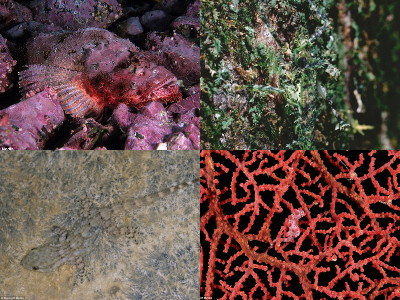Research results show that ``Indonesian combat boat'' was depicted in Aboriginal rock art

The Australian continent is geographically far away from other continents, and the
Moluccan Fighting Craft on Australian Shores: Contact Rock Art from Awunbarna, Arnhem Land | Historical Archaeology
https://link.springer.com/article/10.1007/s41636-023-00390-7

Archaeologists identify Moluccan boats on NT rock art drawings – News
https://news.flinders.edu.au/blog/2023/05/30/archaeologists-identify-moluccan-boats-on-nt-rock-art-drawings/
Archaeologists say Moluccan boats depicted in Arnhem Land rock art, solving mystery - ABC News
https://www.abc.net.au/news/2023-05-28/nt-moluccan-boat-arnhem-land-rock-art/102400042
Mysterious rock art painted by Aboriginal people depicts Indonesian warships, study suggests | Live Science
https://www.livescience.com/archaeology/mysterious-rock-art-painted-by-aboriginal-people-depicts-indonesian-warships-study-suggests
Aumburna , a sacred place for Aboriginal people in Arnhem Land in northern Australia, is known for the discovery of many Aboriginal rock art and bark paintings. In addition to animals such as fish and kangaroos, the rock art drawn by Aboriginal people depicts European ships, guns, and alphabets from the 19th and 20th centuries, showing the influence of European settlement.
In the 1970s, it was discovered that among the rock art of Arnhem Land there was a ship that did not appear to be of Western origin. Below are sketches of two paintings drawn in 1998.

One of them is also included in the photo.

Below is a photo that has been edited to make the outline easier to understand.

It has long been known that Aboriginal people living in northern Australia had contact with the people of Makassar , located in the southern part of Sulawesi, Indonesia. However, the unique shape seen in the ship paintings investigated this time was different from the fishing boats and trading ships of Makassar that have been confirmed in Aboriginal rock art.
The research team also pointed out that this painting has features seen on battle ships, such as ``triangular flags, pennants, and ornaments on the bow.'' Based on the shape of the vessels, it was concluded that these vessels were 'combat boats from the Moluccas,' located east of Sulawesi and north of Australia.
The photo below is of a Moluccan fighting boat taken in 1924. You can see that the decorations on the bow of the ship are very similar to the ships seen in Arnhem Land rock art.

Darryl Wesley , senior lecturer in archeology at Australia's Flinders University , said: 'These two vessels add a new dimension to the northern Australian exchange zone. It's not like this land has been cut off from anywhere for 5,000 years.'
Mr. Wesley said, ``These ships are combat boats with decorations such as pennants and flags, which distinguish them from ordinary trading ships or fishing vessels. Our understanding of the Makassan ships is completely different.' The fact that these combat boats were visiting northern Australia suggests that there may have been some kind of attack, physical violence, or use of force against Aboriginal people from the people of the Moluccas.
In addition, since the rock art drawn by Aboriginal people captures the characteristics in considerable detail, it is thought that the person who drew it did not just look at the Moluccan fighting boats from a distance, but also looked closely at them up close and correctly understood every detail. It is being The researchers argued that either warships may have actually visited the Arnhem Land coastline, or that Arnhem Land Aborigines may have traveled to the Moluccas and returned from there to paint.
According to the research team, Dutch explorers who visited the Moluccas in the mid-17th century reported that the people of the Moluccas regularly sailed to northern Australia to catch sea cucumbers and other seafood. . Lead author of the paper, Associate Professor Mick de Ruyter, a marine archaeologist at Flinders University, said: 'These motifs suggest that sporadic or accidental voyages from Indonesia to the Australian coastline may have been a regular occurrence for sea cucumbers. 'This supports the idea that the fishing took place either before or in parallel with the fishing.'
Related Posts:







